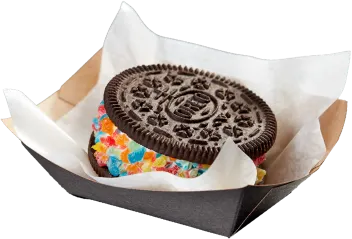Tea is a versatile ingredient which augments flavor profiles across restaurant menus.
Tea has been enjoyed as a beverage for thousands of years, and has been elevated to an almost spiritual status by those who enjoy it.
An increasing number of chefs are taking tea from the kettle to the skillet, thus including the unique, tea flavors as a versatile ingredient in rubs, marinades, baked goods and desserts, among other uses.
Earl Grey tea, a traditional black tea flavored with oil from the rind of a bergamot orange, is a particular favorite because of its unique flavor profile. In citing Earl Grey as a “Flavor of the Week” earlier this year, Nation’s Restaurant News notes its use in “everything from desserts and breakfast pastries to cocktails.”
The flavor is in what Datassential describes as the “proliferation” stage, in which most consumers — 75 percent — are familiar with it, but it is not quite ubiquitous. It is found on 10 percent of restaurant menus, according to the research firm, and its presence is up 40 percent over the last four years.
Other tea flavors, including jasmine and herbal teas, are also used in cooking. But perhaps the top current trending flavor is matcha, a Japanese tea made using finely ground green tea leaves. Matcha’s recent surge in popularity — entire restaurant concepts have been built around it — may be getting a boost from its association with healthful properties.
Whole Foods Market cites matcha powder, among other nutrient-rich powders, as a top trend for 2018, in part because of its easy adaptation into various food items.
“Tea is such a great ingredient to use because there are so many versatile flavors and integrations,” says Sean Brennan, founder of The Pie Hole, a café chain based in Los Angeles. “We love using it.”
Here are some of the ways chefs are serving tea that you can sink your teeth into rather than sip from a cup:
1. A slice of (tea-flavored) pie
A longstanding customer favorite at The Pie Hole is its Earl Grey Tea Pie, for which the chain infuses high-quality Earl Grey tea into the white chocolate mousse filling. It also has a layer of chocolate ganache, and is topped with salted pistachios and whipped cream.
“The slow steeping process makes for a very deep and rich tea flavor that you can taste, but it is not overwhelming,” says Brennan. “We are known for fun and inventive pies, but also for always striking a perfect balance, which this pie does so well.”
The Pie Hole’s first tea-flavored pie was the Thai Tea Pie, which the chain brings back for special occasions, says Brennan. It features a rice cereal crust and the flavor of a traditional Thai Iced Tea, a black tea which is sometimes spiced with star anise or other flavors.
“We get lines out the door for this pie,” he says.
The Pie Hole also recently debuted a Matcha Tea Pie, “which sold out faster than we could make it,” Brennan says.
2. Bringing the heat (and tea) to ice cream
Ice cream has emerged as another platform for tea-flavor experimentation. Green tea ice cream has become a staple at many Asian restaurants and at on-trend scoop shops, but some creative restaurateurs are experimenting with formulations which feature unusual ingredient combinations.
Take Earl Grey tea and Sriracha, for example.
“The flavor is pretty unexpected — a black English tea mixed with a Southeast Asian condiment,” says Pete Angevine, founder and co-owner of Little Baby’s Ice Cream, which has offered Earl Grey Sriracha Ice Cream on its menu since the Philadelphia-based chain launched in 2011.
“It’s a prominent part of our brand,” he says, noting that Little Baby’s is known for its “unusual, delicious” flavors.
Little Baby’s makes the Earl Grey Sriracha ice cream by finely grinding Earl Grey tea leaves and blending them with the dairy mix. The Sriracha is added later. The leaves give the ice cream a distinct texture, Angevine says, while the Sriracha provides the spicy heat.
Although many of Little Baby’s ice cream flavors are made with coconut milk, Angevine says the Earl Grey Sriracha flavor works better with real cow’s milk.
“Earl Grey seems to go better with milk than it does with coconut,” he says.
At Cha Cha Matcha, a matcha-themed café in New York known for its Instagram appeal and celebrity sightings, a green tea-flavored soft-serve ice cream is among the favorite menu items. But other matcha-flavored edibles are also popular, including matcha cupcakes and matcha banana bread.
3. Rubs and marinades
Teas are not only adding flavor to snack and dessert menus, but they are also being used to enhance the main course.
Tea flavors are “subtle and enhancing,” and “very complementary” to many other ingredients, according to The Tea Spot, a supplier of loose-leaf teas and tea ware.
Among its suggested uses are:
an oolong-based rub for vegetables or seafood. a mango-flavored Ceylon tea as an ingredient in pumpkin butternut soup. a Rooibos tea-flavored rub with almond and vanilla flavors for steak.
The Food Network offers several suggested uses for teas in cooking, including smoking, brining, braising and poaching.
“In most cases it’s just swapping in brewed tea for the liquid which you would normally have used, like the water or stock in a braise, for example,” the Food Network says.
Green, black or otherwise, tea is a versatile ingredient which offers a range of uses as an ingredient throughout restaurant menus.
Stay Top of Mind With Operators
Read about 6 Trends Changing and Challenging the Foodservice Status Quo in 2022. Read Article
Recent Posts
All in Good Time: What Makes for a Winning LTO in 2021?
Chefs Cook Up the Future of Fast Casual Restaurant Operations
Chocolate 2.0: The Future of Chocolate Snacks & Desserts
Delivery-Only Restaurants Steer Foodservice in New Direction
Posts by Topic

Join our email list and be the first to know when we drop new articles, trends and insights with updates delivered directly to your inbox.




